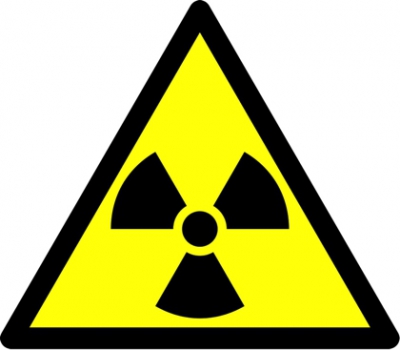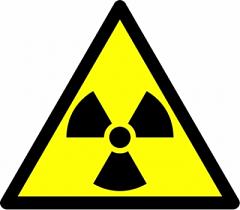Fukushima: Impossible without computer sabotage says U.S. expert
Fukushima was impossible. The swamping of the external generators by the tsunami was irrelevant, because the
Stuxnet was designed specifically to target Siemens SCADA controllers and is most effective at tampering with fluid control systems. The centrifuges it attacked in Iran were ideal. So are the fluid control systems at a nuclear facility. Oil refineries are equally at risk, Stuxnet is most dangerous when affecting a system which needs to control the flow of any liquid, be it hydraulic, for cooling, or combining chemicals. Stuxnet is documented to have been produced by the Israeli Defense Forces, for the purpose of destroying any industrial system that can be destroyed by improper fluid flow.
Magna BSP, a Dimona based company with no history outside of IDF contracts prior to Fukushima has a suspiciously short domain history despite a 10 year claimed history. Magna BSP had a full time internet linked two way connection to the Fukushima reactor room(s) all the way through the disaster. They told TEPCO about that connection on March 15 (after everything blew sky high) via an article printed in the Jerusalem Post. Why did Manga BSP wait until everything was blown sky high to tell Tepco the data link existed, and then did not tell them face to face? I find it hard to believe that TEPCO would not have been interested in viewing a reactor that was about to explode. It seems impossible that Tepco would not have wanted to view the reactor, and probably did not ask because the link was kept a secret. It is a simple fact that internet connections are never allowed inside a reactor's containment. The connection was mentioned in the Jerusalem Post AFTER the destruction was finalized.
Stuxnet has two modes, random and administrative. It can be administered to optimize the damage and can also transmit setup information and industrial system information to a remote computer. Once installed on the host system via a flash drive it causes that system to violate it's normal security protocols and internet administration becomes possible if a connection exists.Tampering is not visible on the control room readouts, because Stuxnet learns what "normal" looks like and keeps the temperature, pressure, and other readouts within normal limits so that the operators are oblivious to the destruction happening in secret. Stuxnet appeared in Japan in
June of 2010, shortly after Magna BSP arrived. Remote administration mode can be adjusted on demand to suit any need. No doubt the people at Fukushima sat there in idle mode thinking all was well until something screamed or went boom and at that point it would be too late to do anything other than cry.I am a lifer in the types of control systems Fukushima and it's clone, TVA owned Browns Ferry have. BOTH have been upgraded to modern Siemens controllers running the Supervisory Control And Data Acquisition (SCADA) system Stuxnet was designed to attack; upgrades are the norm in any major facility. On many blogs people say the controls were old and therefore Stuxnet immune; they are out of touch or have no knowledge of industrial control systems. I actually ferreted it out.
And now I will explain in detail why the problems before the explosions had to be sabotage
The diesel generators were not out in the open as we were led to believe, they were in fact located in the basements of the turbine buildings which were sealed off and never significantly flooded. One of them stayed running the entire time, but the electrical switch gear attached to it disconnected it for an unexplained reason which made it useless. Each of the backup generators at Fukushima were capable of running 14,000 households each, which means they had to be over ten megawatts each. It is obvious then that Fukushima was set up to survive on only ONE of 13 backup generators, and ONE did keep running. One would be many times larger than needed to run last ditch backup systems at all reactors, but would not keep business as usual. But that is not the real story, which is that even others which were high and dry stopped as well.
I hypothesize that the ONE generator that kept running was kept as a lone reserve, never hooked up to a SCADA controller. Why did the switch gear disconnect a working generator? That is the type of thing Stuxnet was designed to do. On top of these things, emergency generators arrived on scene within 9 hours, before anything bad happened at all but were not able to provide power because the switch gear would not let them. This
deceptively written report from the World Nuclear Association contains all this information, but it is presented in a way which will cause you to overlook these things if you are not careful while reading it. This report contains accurate information presented in a very misleading way, which will protect the liars who wrote it - they actually did speak the truth here but in a way it would be missed by virtually anyone. Study the facts presented here with the full ramifications of those facts in mind, not their shallow misleading conclusions.From this report you can get:
1. The generators never got submerged - you have to connect the dot between them being in a contained area and the tsunami thereby not being able to get to them. Some water got into one of the turbine buildings where several were located and flooded the lowest point in that building to a depth of 4 feet, which means that even if the generators were on the floor at the lowest point they likely would not have been swamped because they are too big - the water would not get past the footings. Perhaps a one megawatt generator would have swamped; certainly not one of the big diesels, which were, according to this report enough to run 14,000 homes each. In addition to this, there were several generators in a second location that never got flooded at all. One of these generators kept running but was not able to get power into the facility because the switchgear prevented it.
2. You have to have watched the robot videos, which clearly show the switch gear that malfunctioned after the tsunami never got wet - there was a non tsunami reason for the failure. Also look at the high resolution photos referenced below. There is no switch gear for the diesel generators outside the facility, it is all indoors in areas higher than the water got. Remember that there was no emergency when the off site generators arrived, which means that they could work efficiently to get things up and running.
With my experience in this area, Assuming it DID get soaked, a complete replacement of high capacity switch gear should only take an afternoon if done with an emergency attitude. A truck mounted crane or a forklift does all the heavy lifting and the stuff is modular. In every major facility there are spares galore. It is not that hard to make the terminations. A worst case scenario could have been addressed before things went horribly awry, that is, unless a virus did not let the new switch gear activate either. It would take days to conclude a virus was messing things up. You would not expect that. I am sure there is a LOT we never heard about.
3. That batteries held, leaving only a one hour gap in time where there was no power present to run things before adequate off site power drove into the facility on the road all nice and ready to hook up, but was denied to by switch gear which this report says was swamped but that is likely an assumption because swamped switchgear could have been replaced even before the batteries died. The fact that the offsite generators were able to be driven into the facility also proves that other lies told about the earthquake in general - employees leaving only to find cracks in the road so bad they had to walk home; Why? Why lie like this? AT LEAST this report has some modicum of honesty.
4. You have to look at the chart that shows the thermal output of the reactors 8 hours after the earthquake, which is when the batteries running the electrical cooling pumps died, the output at that time was less than 20 megawatts from each reactor, which means that they would not have had troubles before the off site generators were hooked up to restore power if it was not denied by what I suspect was Stuxnet infected switch gear. The real critical time is in the first 3 hours after shutdown.
5. Reactor 3 exploded entirely, yet this reactor had the most functional backup systems. At least this report says the explosion remains "unexplained". Perhaps those who wrote the report should take a look at
this for an answer.6. The reactors are stated to be an "early 1960's design" apparently to mislead people into believing they were outdated even when installed. This was not the case. Their design was an early 60's concept but in fact a late 60's design, and since installation takes years, what more could you expect in the early 70's? The reactors were in fact a very safe design. This report at least states that the facility was very well updated. Identical reactors at TVA owned browns ferry have been certified safe and licensed to operate through the year 2035.
These reactors were also converted over to run the Siemens Scada system. The reactors at Fukushima were not garbage. The fastest cars in production still function on a late 1800's concept.I hypothesize that the situation at Fukushima is not being properly assessed by facility controllers because STUXNET is STILL giving false readings to the control panels, readings which obviously have to be false because they show containment pressure when confidential leaked photographs prove beyond a doubt
no containment exists AT ALL at reactor 3. There is not even a reactor there.This report is perfectly inaccurate with regard to reactor 3 containment. Perhaps the people who wrote this report have not actually looked at the facility or seen the confidential photographs.
This report supports what I have said here entirely. It was written by an experienced reactor operator. I found this on May 10. I was absolutely right!Each reactor has 8 separate emergency backup systems, each capable of saving the reactor on it's own. Three are designed to function perfectly if all power is lost and even the generators fail. Fukushima did not need any electrical systems operating AT ALL to keep itself from blowing up, when power is lost steam from the reactors is automatically diverted from the generator turbines to two totally separate
steam turbines connected to totally separate water pumps needing only reactor steam to power them. Even that backup system has dual redundancy, only one of the two is needed for the job. But the valves which have to activate to re-divert the steam, all 6 valves on a total of 3 fuelled reactors, eventually failed to. At reactors 1 and 3 these systems worked, but switched off at reactor 1 within an hour and off at reactor 3 after running for more than two days. No one has been able to explain why these systems switched off all by themselves, when they need a powered command to switch off. At reactor 2 they were never allowed to activate. This can only happen if the control system tells them to shut off or stay off, absent intervention from the controller they automatically and seamlessly switch cooling modes to passive rather than electrical.Some readers may remember that the real issue at Fukushima was malfunctioning valves, and the need to get someone past the radiation to open them. These are the valves that were spoken of. Because Stuxnet kept the readouts normal, no one knew this system did not function until major problems happened as a result flooding the area where the valves are with radiation. This prevented last ditch efforts (running and cutting the wires). One automatic valve jamming and mechanically failing would be a surprise,6 failing can only be sabotage.
In addition to this, another completely independent separately piped backup with an entirely different electronic decision tree which
injects borated water at a pre charged 3,500 PSI into the reactor to irrevocably shut down all chain reactions (reactor rebuild required) also simultaneously failed at all 3 fuelled reactors. The borated water systems have explosive operated valves so reliable that even one out of 3 failing would be a ten thousand to one possibility, if that. The reliability of the borated water systems is technically theoretically assured. All three failing at the same time at Fukushima can only mean sabotage.High pressure in all of the reactors proves the quake did not damage any of the infrastructure at Fukushima because any leaks would have let the pressure go. In addition to this, the seismic readings at Fukushima were 6.07 Fukushima was designed to handle being at the epicentre of an 8.
The media keeps harping about how all the water went away. It only did because these three backup systems were prevented from cooling the reactor which caused the water to boil off and never be replaced. High pressures were talked about constantly in the press; This means beyond a doubt that all 6 steam powered backup systems were intact, and all 3 borated water systems were intact also because if they were not the pressure would have escaped through them. Absent emergency backup control power keeping the virus alive; (control power Magna BSP admitted was there the whole time by mistake when they said their cameras and supporting computers captured the explosions and maintained a data link) the valves which control these systems would have opened when the generators failed and there would have been no disaster. 3 worst case scenarios where all 9 automatic valves across 9 separate emergency backup systems are held shut by the controller when no power should have been present to prevent them from activating can only mean sabotage.
A historical perspective of Fukushima shows the hydrogen blasts were bogus.
Hydrogen blasts could not have damaged Fukushima so badly, this is a media fed lie. If hydrogen gas alone mixed with air could produce blasts strong enough to blow reactor containment buildings to pieces, which are among the strongest structures on earth (exceeded in strength only by ones like Hoover Dam,) then hydrogen gas filled bombs would be the prime military option. In reality, the Three Mile Island incident proved hydrogen ignition in open air after reactor meltdown is likely to only scare employees, while causing no damage at all to the facility, as was the case there. It is extremely important to know the differences between the boiling water reactor design and the design of Chernobyl. At Chernobyl, a hydrogen blast DID cause destruction of the facility, but it was because the reactor design caused hydrogen and oxygen at a perfect ratio to ignite at thousands of PSI inside the reactor pressure vessel. That's a big difference from hydrogen alone igniting in relatively oxygen starved open air at one atmosphere (14.5 PSI). The difference would be similar to the difference between a small firecracker and a case of dynamite; there were many orders of magnitude lower blast potential at Fukushima.
Just to be absolutely safe after the Three Mile Island incident, many nuclear facilities installed hydrogen hard vent stacks hooked directly up to the relief valves on their reactors, and Fukushima was one of them. This was to prevent a hydrogen build-up in the containment building in the event of a core meltdown, which caused a minor explosion at Three Mile Island. These stacks are the tall white towers you see in the
photographs of Fukushima, and they are effective in getting rid of hydrogen build-up, are directly piped, and vent completely outside. "Hard piped" means that the electrical failures would have had nothing to do with the blasts, because a hard vent is exactly that - no fan needed at all because the system is sealed. Even if the hard piping at all 3 fuelled Fukushima reactors failed entirely, it should not have been any worse than Three Mile Island which did not have any hard venting to begin with. While hydrogen venting might be a problem if it ignited, it would not mean the death of a facility. It makes no sense that at Fukushima we got a nuclear weapon style mushroom cloud far in excess of the highest yield conventional bomb.Internet site reference: http://www.jimstonefreelance.com/fukushima.html
Comments
There are 0 comments on this post















